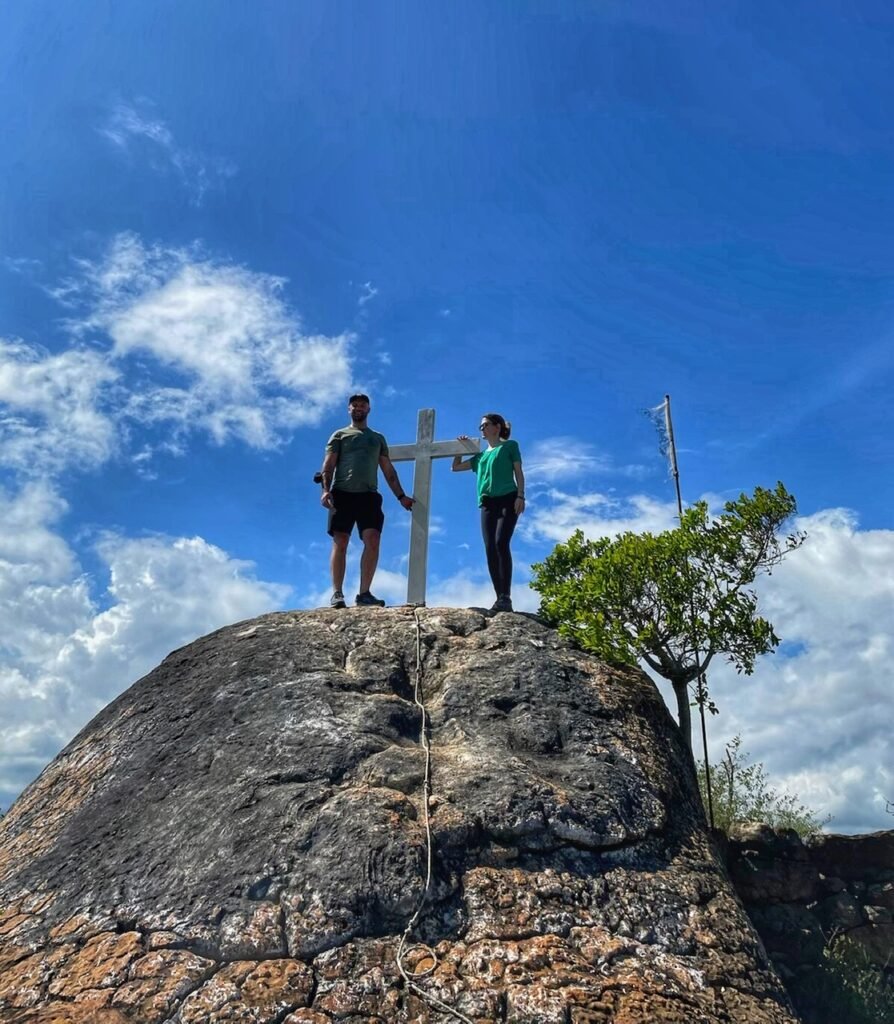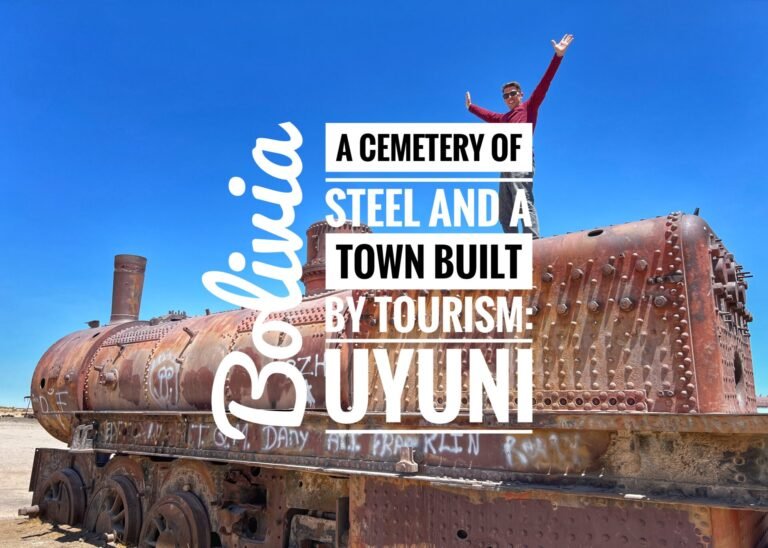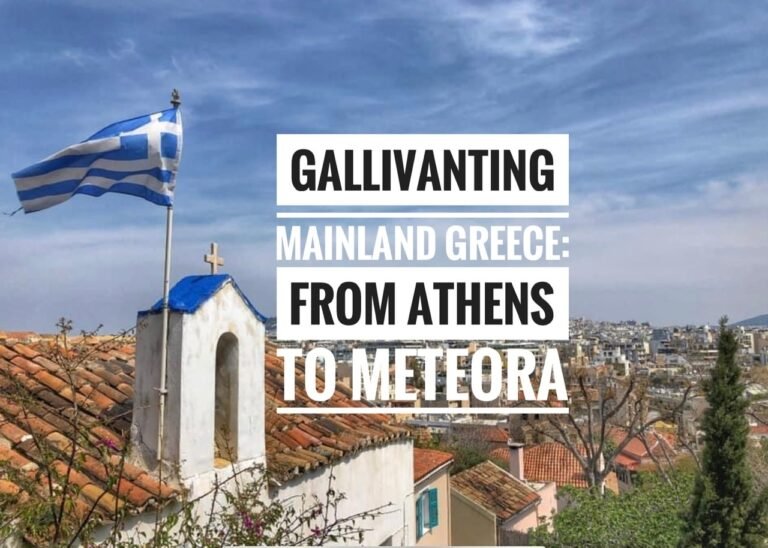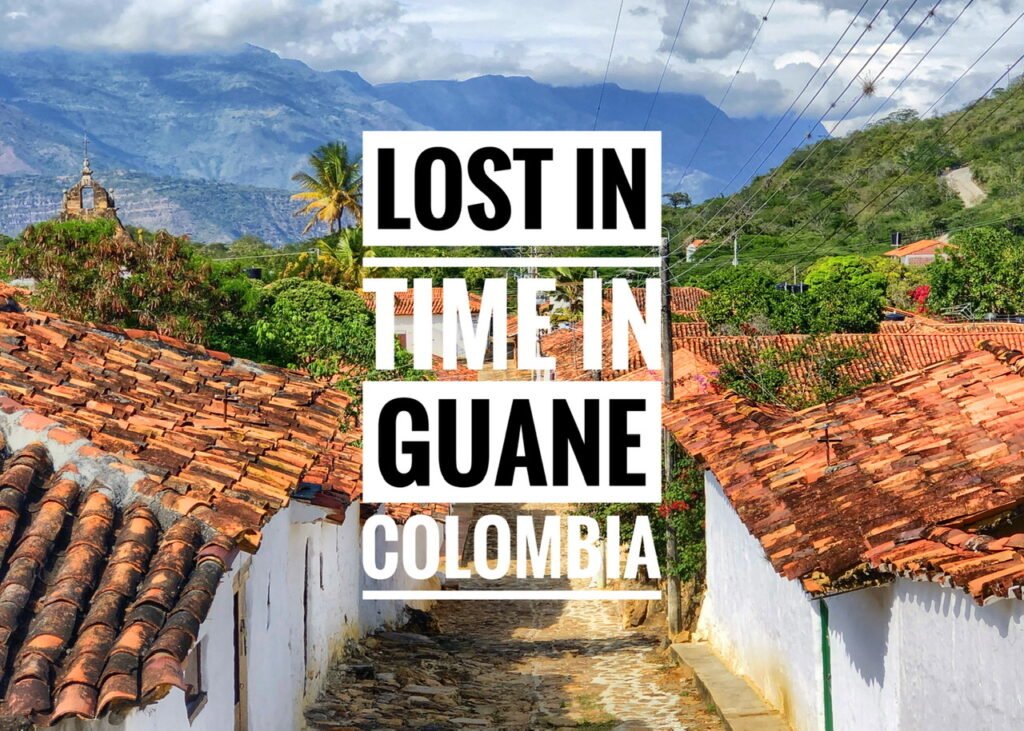
Folded amongst the rolling Andes and undulating countryside of Colombia’s Santander region, Guane is a colonial Colombian pueblo utterly lost in time. When we took our first steps into the village, it was eerily quiet. Soundless. No children. No dogs. No chickens. Few people. The narrow, cobbled streets were all all lumpy and lovely and the white-washed houses seem sublimely at peace topped with invariable red roof tops. In short, it’s flawless. And how you arrive here is even more perfect…down El Real Camino…a six-kilometer long path created with an endless river of stones that dates back several hundred years. This part was built by Guane’s indigenous people, was later used by Spainards and reengineered and restored by a German (naturally) in 1864. It is part of a much larger trail system.

The beginning of the trail, which starts at the northern end of Calle 4 in Barichara. This was our second time doing it and it was even better doing it with friends!

And bonus…some of the most beautiful scenery we had seen in the country.

Years before colonial times, this was the main route between the two towns of Barichara and Guane and was used by Colombian natives who inhabited the region to commute everyday to trade goods, work and visit relatives. Nowadays this route is used by kids from Guane (a very small handful) who go to school in Barichara? Now that’s a haul to get to school!

“Locals, especially farmers, who lived in the region around the 1900s and walked it everyday, used to do it barefoot. There is some traditional footwear that people back then used to wear called ‘chocatos’ and they’re similar to what we know now as espadrilles. (Slip on shoes with no laces.) Farmers from all ages would walk barefoot on these roads carrying with them water and their shoes. Once they would get to town, they would wash their feet with water, put on their shoes and then proceed to do the same process for the return, so their shoes wouldn’t get damaged since the road was ‘a bit rustic!’” (Itinari.com) Fortunately, we got to amble the path with shoes, and ample sunscreen, on.
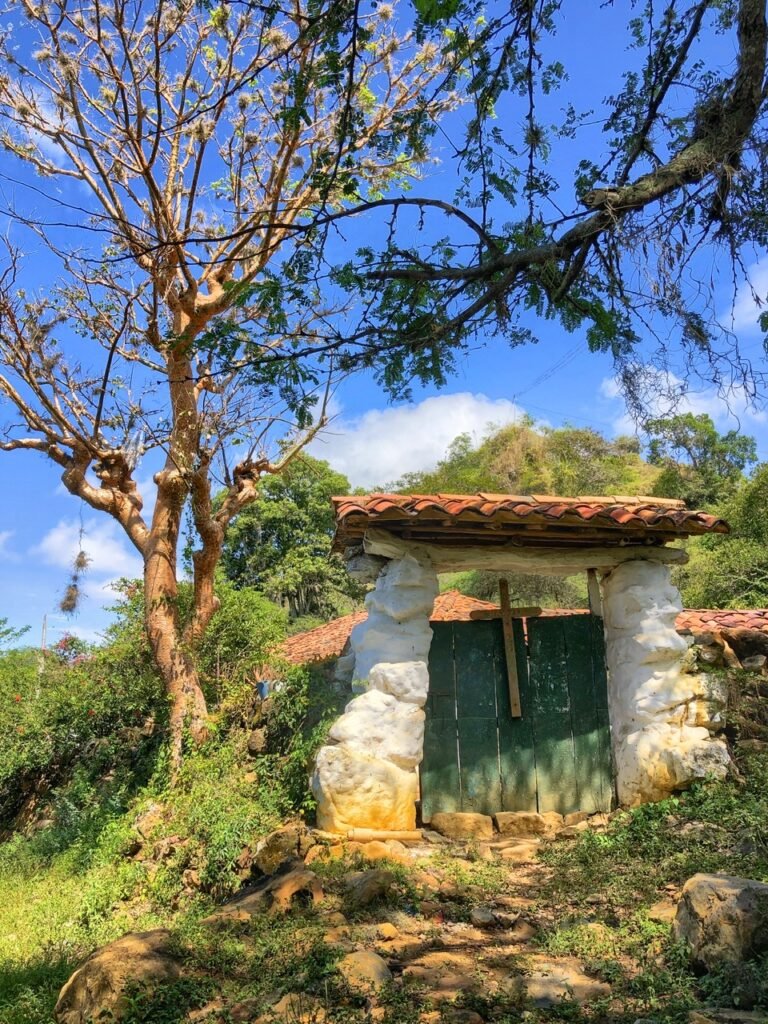
The entrance to a small chapel along the way.

At about the halfway point, we stumbled onto what promised to be a store and a place to refill our tepid water bottles… Yes, it was HOT!
However, this detour only resulted in a scurry up a large rock to an iconic cross on the hill.

Even Abby, eights months recovering a bike accident, managed to maneuver her way up!

The stunning scenery from the top.

Arriving to the village of Guane

A rare photo of the two of us.

Embracing the solitude and trying not to make a peep…

Abby…can you do it? Love this face.

One of the many sleepy and desolate streets.

Venturing into the main square.

The clock tower and an archeology/paleontology museum, which remained closed. This town is known for magnificent fossil finds, so it’s a bit unfortunate.

This was new since our 2014 visit. Not sure that we’re fans.

The Parroquia de Santa Lucía is a simple wonder from 1786 preserved in time.
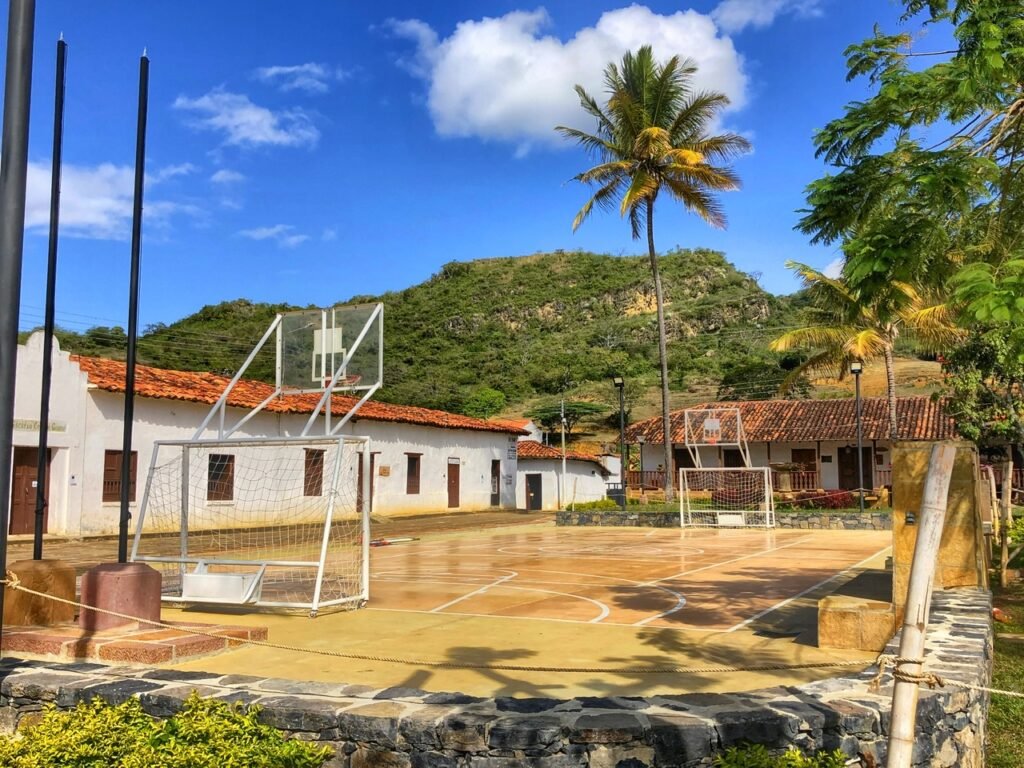
This basketball court also dates from 1786. Kidding. Duh.
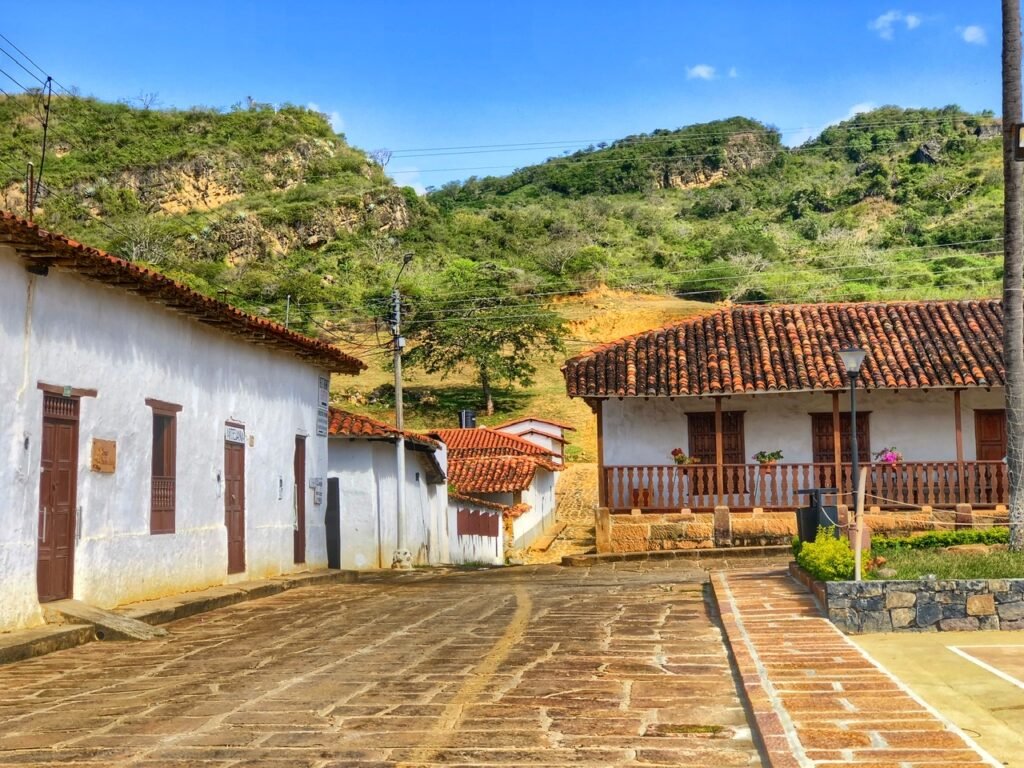
We did manage to find some food at a restaurant near here. It was a basic Menu del Dia which was definitely not the most amazing, or inexpensive one, during our travels through Colombia.

Another view of the clock tower.

There’s really not a whole lot going on here, which is why we love it.

The view from the mirador of Guane. This particularly scene reminded us a lot of our time in the Ethiopian highlands near Lalibela.

Waiting for our bus back to Guane. Fortunately, there’s now a new road that will get you there in about 15 minutes.

Noise! It exists!
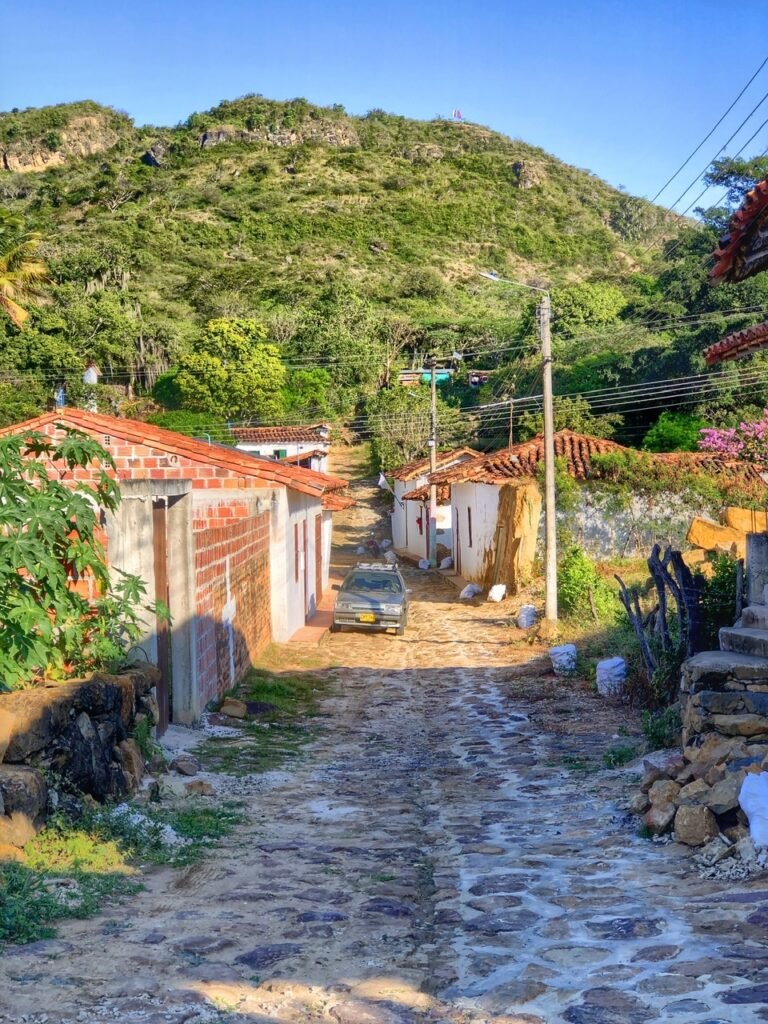
Time to return back to civilization! If you can call Barichara that…

